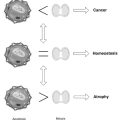Chapter 30 Urine Indican Test (Obermeyer Test)
 Clinical Application
Clinical Application
Because most of the endogenous indoles have a side chain that prevents cleavage and are instead metabolized to skatole, the production of indicans (indoxyl potassium sulfate and indoxyl glucuronate) reflects bacterial activity in the small and large intestines. Box 30-1 lists conditions in which increased levels are found.1–4 Elevations of indicans are considered an indicator of gastrointestinal dysfunction and overgrowth of anaerobic bacteria (dysbiosis). The indican test can be used to monitor the efficacy of treatment of gastrointestinal dysbiosis.
BOX 30-1 Conditions Associated with Elevations of Urinary Indican1–4
Method
1. Place 5 milliliters of fresh urine in a test tube.
2. Add 5 milliliters of Obermeyer reagent under a hood to exhaust vapors, and cork securely.
3. Invert several times to mix.
4. Add 2 milliliters of chloroform, cork securely, and invert several times.
5. Allow the chloroform to settle, and then observe.
6. The results are then graded according to the color present in the chloroform layer.
 Interpretation
Interpretation
A positive result may indicate one of several underlying disorders, any of which can lead to bacterial dysbiosis and/or overgrowth, including hypochlorhydria, maldigestion, pancreatic insufficiency, malabsorption of protein, and excessive dietary protein intake (see Box 30-1). Occasionally a positive test can be caused by increased dietary protein prior to testing, which can be prevented by the institution of a moderate protein diet for 2 days before testing.
False-negative results occur when formalin, methenamine, or sulfasalazine (Azulfidine) is present.2 Indigo red may occasionally form from slow oxidation. The presence of iodine, salicyluric acid, methylene blue, or thymol causes a violet color that can be removed with the addition of a crystal of sodium thiosulfate. Bile pigments can interfere with the reaction, but can be removed by shaking the urine with barium chloride and filtering.
1. Todd J. Clinical diagnosis and management by laboratory methods. Philadelphia: WB Saunders; 1979. 592-593
2. Greenberger N., Saegh S., Ruppert R.D. Urine indican excretion in malabsorptive disorders. Gastroenterol. 1968;55:204–211.
3. Curzon G., Walsh J. Value of measuring urinary indican excretion. Gut. 1966;7:711.
4. Asatoor A.M., Craske J., London D.R., et al. Indole production in Hartnup disease. Lancet. 1963;1:126–128.


